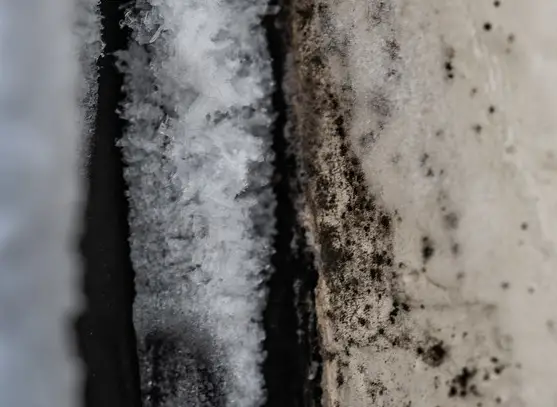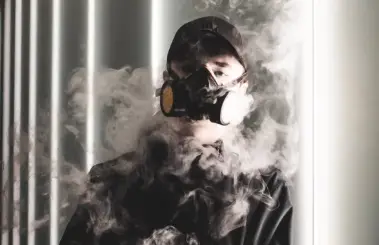
What does harmless black mold look like? Mold can take on different forms and it can be difficult for you to know whether or not mold is present in your home. Don’t worry, as, in this article, we will break down some facts for you.
Mold is known to dwell on wet and humid climates, such as tropical areas of the world. The problem with mold is that because of their bad smells, they can tend to make a person feel dizzy or lightheaded. Another problem with mold is that they could also cause airborne infections to run rampant in a home or area when left untreated.
Treating mold can be easily done if you have the right tools and knowledge on how to eliminate them. Remember that like all sources of dirt and bacteria, cleaning up mold can make a difference for your overall health.
How do I know if its black mold?
Black mold is often dangerous because it can be toxic to your brain when you are exposed to it for a very long time. It has even been linked to certain behavioral disorders, too.
Here are ways to figure out if your home has Stachybotrys chartarum, commonly known as a black mold:
- You smell something very musty or unpleasant. If something smells off in your home, it could be the sign of black mold. However, if you can’t really smell anything since you might have gotten used to your home’s smell, you can try having a guest come over and smell it for you.
Additionally, hiring a mold inspector could also help you to rule out the smell in certain rooms to check for mold. Usually, musty smells may lurk between tiles and even on walls covered with wallpaper.
Before you conclude that it’s really mold, it’s best to check if your air quality is really bad, as mold can sometimes contribute to that. Learn how to test air quality in your home.
- You literally dark water spots. They would probably scare you off like what you see in horror movies such as The Ring. These dark water spots tend to appear on corners of your walls or ceilings. The black appearance is what gives them their name.
The usual cause for these dark water spots could be leaks in piping, from your ceiling, and others. They can be easily mopped or cleaned with a household disinfectant.
- You get sick more often. Specifically, you get more respiratory diseases than usual, such as nasal allergies, colds, and cough. You may even get headaches (as we mentioned in the intro), as well as watery eyes and bad skin irritation.
- You even see specks of other colors. Black mold isn’t always black – some variants could even have green, white, or orange specks, which is usually due to the fact that there can be various variants of black mold. All of them are dangerous regardless of color.
What should you do if you find black mold?
Here’s how you can deal with black mold:
- Eliminate the black mold. Use protective gear such as latex gloves and a face mask while cleaning it with disinfectant household cleaners. Make sure it is scrubbed away wet so as not to put it back into the air.
You can try different home remedies, such as:
- Tea tree oil
- White vinegar
- Grapefruit seed extract
- Hydrogen peroxide
- Consult a mold cleaning company. If you’d like your home professionally treated then you can also do that, especially when the mold infestation is very bad or if your home is very spacious.
To prevent mold from happening, you should:
- Consider adjusting your humidifier/dehumidifier or investing in one
- Look for leaks around your piping and appliances
- Keep your home well-ventilated with enough windows
- Consult professionals on freeing your home from mold invasion

What happens if you breathe in mold spores?
Mold spores can cause any of the following:
- Breathing and respiratory problems – this may include shortness of breath, frequent sneezing, nasal allergies, coughing, colds, and the like. When you are exposed to mold spores for too long, it can even settle inside your lungs and colonize (yuck!). It will eventually become a starting point for various chronic diseases, such as tuberculosis.
- Eye irritations – this may include watery eyes or reddish eyes, which can really hurt. This would also make it difficult for you to read that e-mail from work.
- Skin problems – your skin may itch more often if your home is infested with a lot of molds. It would also be difficult for you if you already have underlying skin problems.
- Headaches – people with mold infestations at home tend to have more headaches than usual. If your office is infested with black mold, it can affect your productivity.
Do air purifiers help with mold?
If you ever ask the question “does an air purifier help with mold?” the straight answer is yes! Air purifiers have a true HEPA filter combined with an activated carbon filter. Both of them can get rid of mold by eliminating mold spores in the air and also lessening the bad smells that the mold gives off.
Ultimately, if your air purifier has a UV-C germicidal lamp, it can kill mold spores more efficiently, so it’s best to go for an air purifier with that kind of feature. You can often see these qualities and features in an air purifier for cooking smells.
Conclusion
Overall, black mold should definitely be killed because it can be bad for our bodies. Any kind of mold is a bad mold since it will take its toll on our respiratory system and may even disrupt our productivity at work or our quality time with the family.
With an air purifier, you can also prevent them from occurring due to its power of cleaning the air. After all, these toxic spots not only look nasty but they’ll also probably give you nightmares far worse than the horror movie we just mentioned earlier.


